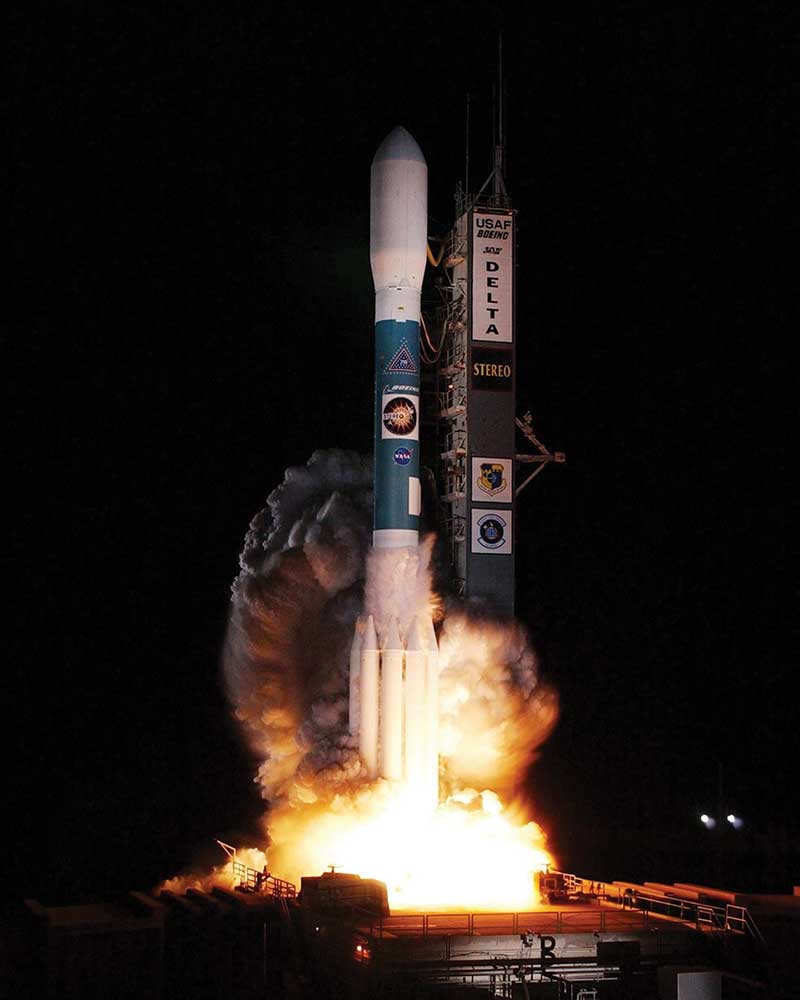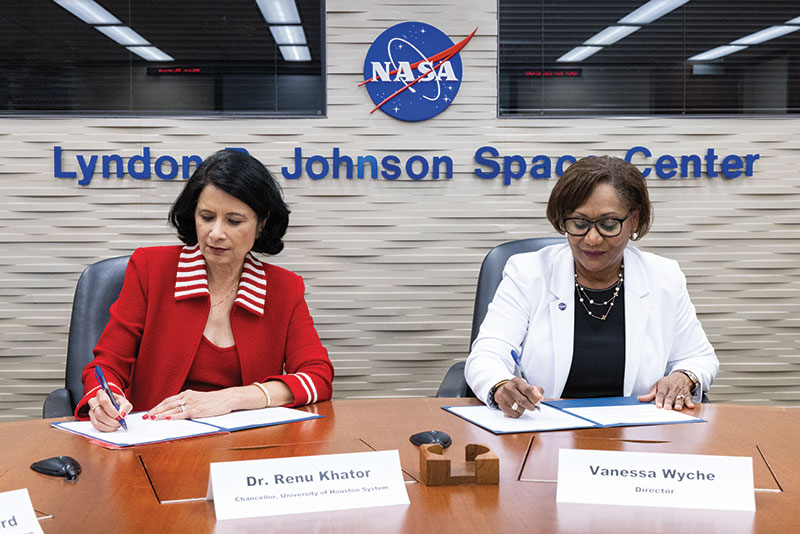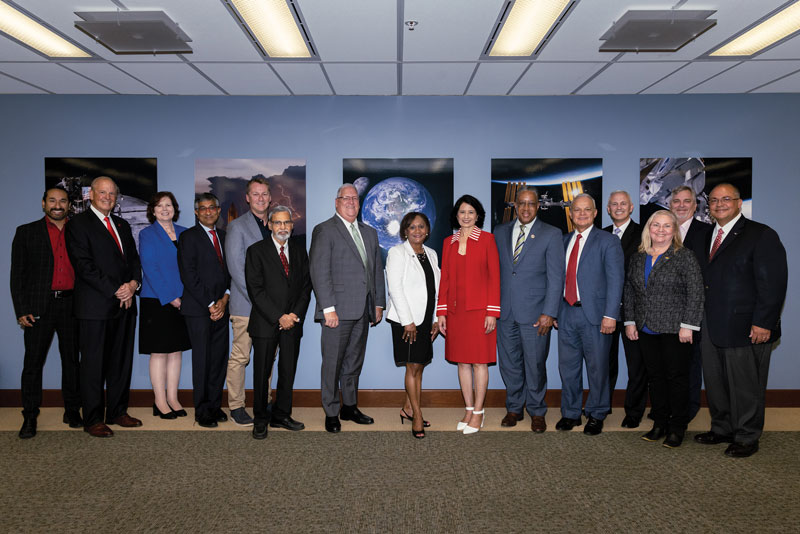By Chris Stipes
 A Boeing Delta II lifts off at 8:52 p.m. Wednesday, Oct. 25 from Launch Pad 17B at Cape Canaveral Air Force Station, Florida. Payload for the mission was NASA's STEREO spacecraft, two NASA observatories on a two-year mission to study solar flares. The 45th Space Wing's support helped ensure public safety and mission success via radar, telemetry, communications and meteorological systems. Photo Credit: pexels.com |
The University of Houston System and NASA’s Johnson Space Center (JSC) are expanding a longtime partnership to work collaboratively on joint research, technology development, technology transfer, training and educational and outreach initiatives.
As NASA endeavors to travel deeper into space, these efforts will be carried out through the undergraduate, graduate, and joint research programs at the four UH System universities: University of Houston, University of Houston-Downtown, University of Houston-Clear Lake and University of Houston-Victoria.
University of Houston System Chancellor Renu Khator attended a signing ceremony at Johnson Space Center on June 10 where she met with JSC Director Vanessa Wyche to discuss the partnership. Loren Blanchard and Richard Walker, presidents of UH-Downtown and UH-Clear Lake, respectively, were also in attendance, as well as Joseph W. Tedesco, Elizabeth D. Rockwell Dean of the Cullen College of Engineering.
“Houston is ‘Space City,’ so it’s important for students and faculty in relevant disciplines across the UH System to have opportunities to engage in and be exposed to real world space flight-related research and technology development with NASA,” said Khator. “These are the kinds of projects that shape lives and create innovations for the greater good.”
Areas of interest for this partnership encompass science, engineering, technology and business disciplines that are vital for human and robotic spaceflight missions, aerial and ground-based research, including data analytics, cybersecurity and other emerging technologies.
 UH System Chancellor Renu Khator and JSC Director Vanessa Wyche sign an extension of a longtime partnership. |
 Dean Tedesco, Chancellor Khator and Director Wyche with other NASA and UH System officials after the partnership signing. |
Engaging in this partnership with the UH System will enable Johnson Space Center to reduce gaps in mission relevant technology development essential for future human spaceflight missions and inspire and engage students in aeronautics, space and science, according to Wyche.
“NASA’s Johnson Space Center has a long history of working with colleges and universities since the early days of Mercury, Gemini, and Apollo programs to help us achieve our human spaceflight missions,” said Wyche. “We are eager to partner and collaborate with the University of Houston system in vital research and technology development initiatives that will enable us to meet our nation’s exploration goals and advance human spaceflight as we work to land the first woman and first person of color on the Moon under Artemis.”
UH System universities have collaborated with NASA for more than a half century on various educational and outreach endeavors, most recently with UH’s Subsea Systems Institute, but this renewed focus will broaden the scope of opportunities across the UH System.
The NASA Office of STEM Engagement will work with UH-Downtown, for example, to target students (pre-service teachers) primarily in the College of Public Service's Department of Urban Education to identify learning opportunities and provide connections to NASA’s missions and work through seminars, campus-wide open houses, classroom visits and more.
UH-Clear Lake and NASA, given their close geographic proximity, have had a symbiotic relationship ever since the Manned Spacecraft Center (now Johnson Space Center) was formed in 1961. Collaboration on academic programming and research will only expand under the new system-wide agreement